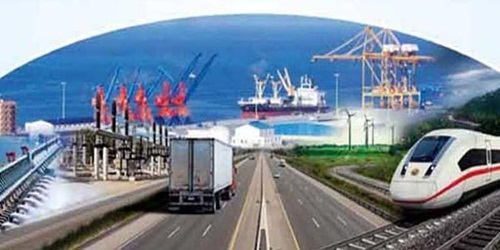Nations that opened up for China’s massive infrastructure investment trade through the much touted “Belt and Road” project are now seeking cover for rising debt burden after Beijing invested billions of dollars in road, railway and port projects.
The initiative, also known as the "new Silk Road," envisions the construction of railways, roads and ports across the globe, with Beijing providing billions of dollars in loans to cash-starved countries.
First announced in 2013 by President Xi Jinping, China's massive infrastructure trade projects, however, are running into speed bumps as some countries begin to feel the weight of debt buried under Chinese investments.
Xi himself admitted of the huge debt burden the projects impose on recipients when he said China’s trade with 'Belt and Road’ countries had exceeded $5 trillion, with outward direct investment surpassing $60 billion.
Perhaps the first to acknowledge the fact is Malaysia, which raised doubts about the real worth of the projects.
During a visit to Beijing in August, Malaysia’s Prime Minister Mahathir Mohamad said his country would shelve three China-backed projects, including a $20 billion railway project.
Sri Lanka had to grant a 99-year lease on a strategic port to Beijing over its inability to repay loans for the $1.4-billion project the previous government had contracted - a heavy price for being highly indebted to China.
The new prime minister of Pakistan, Imran Khan, has vowed more transparency amid fears about the country’s ability to repay Chinese loans related to the multi-billion-dollar China-Pakistan Economic Corridor.
In Maladives, with Bejing grabbing 80 per cent of the country’s debt, the exiled leader of the opposition, Mohamed Nasheed, has said China’s actions in the Indian Ocean archipelago amounted to a “land grab” and “colonialism.”
The problem with China is it does not have any reliable and remunerative investment vehicle for its huge cash surplus that have accumulated over years of trade.
It is left to politicians to decide how, when and where to invest that surplus. This makes Chinese investments more political than economic.
This combined with its ambiguous trade practices make Chinese investments unwelcome in most countries, unless they are totally dependent and needy.
Reports citing a research study by the Centrefor Global Development, a US think-tank, found “serious concerns” about the sustainability of the sovereign debt in the eight countries receiving Silk Road funds.
These include Pakistan, Djibouti, Maldives, Mongolia, Laos, Montenegro, Tajikistan and Kyrgyzstan.
The cost of a China-Laos railway project — $6.7 billion — represents almost half of the Southeast Asian country’s GDP, according to the study.
In Djibouti, the IMF has warned that the Horn of Africa country faces a “high risk of debt distress” as its public debt jumped from 50 per cent of GDP in 2014 to 85 per cent in 2016.
China has long been active in Africa and as the continent’s largest trading partner, is also the biggest investor in Africa. A number of African leaders have gathered in Beijing for a summit focused on the "Belt and Road" programme.
At a daily press briefing on Friday, Chinese foreign ministry spokeswoman Hua Chunying denied that Beijing was saddling its partners with onerous debt, saying that its loans to Sri Lanka and Pakistan were only a small part of those countries' overall foreign debt.
"It's unreasonable that money coming out of Western countries is praised as good and sweet, while coming out of China it's sinister and a trap," she said.























